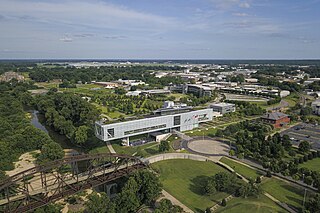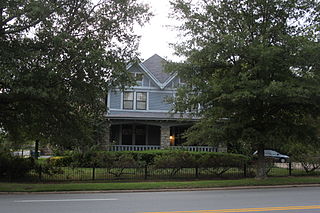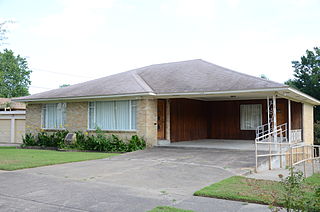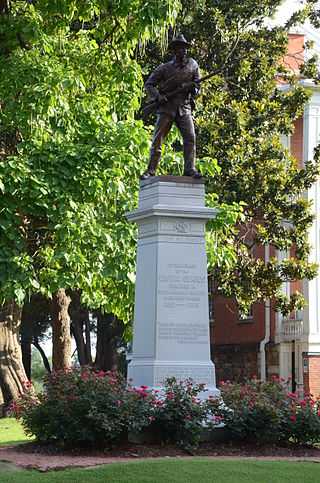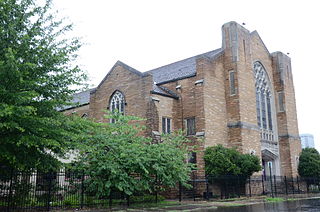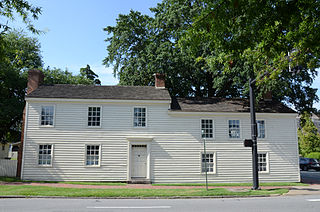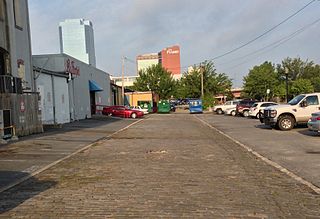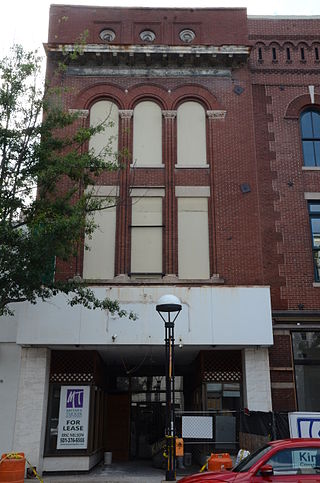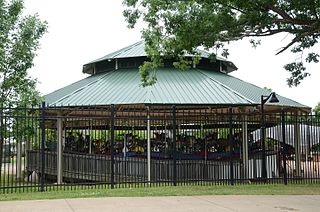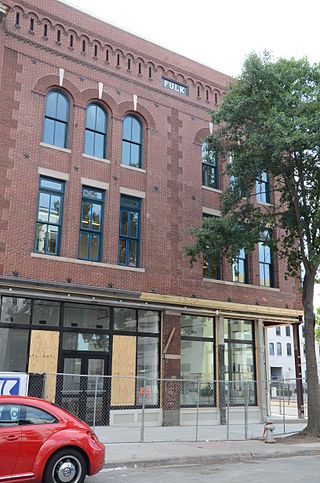16 Sights in Little Rock, United States (with Map and Images)
Legend
Welcome to your journey through the most beautiful sights in Little Rock, United States! Whether you want to discover the city's historical treasures or experience its modern highlights, you'll find everything your heart desires here. Be inspired by our selection and plan your unforgettable adventure in Little Rock. Dive into the diversity of this fascinating city and discover everything it has to offer.
Sightseeing Tours in Little RockActivities in Little Rock1. William J Clinton Presidential Library
The William J. Clinton Presidential Library and Museum is the presidential library of Bill Clinton, who served as the 42nd president of the United States from 1993 to 2001. It is located in Little Rock, Arkansas and includes the Clinton Presidential Library, the offices of the Clinton Foundation, and the University of Arkansas Clinton School of Public Service. It is the thirteenth presidential library to have been completed in the United States, the eleventh to be operated by the National Archives and Records Administration, and the third to comply with the Presidential Records Act of 1978.
2. MacArthur Museum of Arkansas Military History
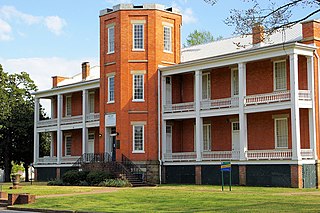
The Tower Building of the Little Rock Arsenal, also known as the Main Building of the U.S. Arsenal at Little Rock, or Headquarters Building of the Little Rock Barracks, is the home of the MacArthur Museum of Arkansas Military History. It is also a part of the MacArthur Park Historic District, in Little Rock, Arkansas.
Wikipedia: Tower Building of the Little Rock Arsenal (EN), Website
3. Little Rock Zoo

The Little Rock Zoo was founded in 1924 and is located in Little Rock, Arkansas, United States. It is home to more than 400 animals representing over 200 species, and covers an area of 33 acres (13 ha). The Arkansas Zoological Foundation is a private 501 c (3) organization that raises funds for zoo development. The Little Rock Zoo is a department of the city of Little Rock. It is the largest zoo in Arkansas, and the only Arkansas zoo accredited by the Association of Zoos and Aquariums (AZA).
4. Old State House
The Old State House, formerly called the Arkansas State House, is the oldest surviving state capitol building west of the Mississippi River. It was the site of the secession convention, as well as the fourth constitutional convention when delegates agreed to ensure voting rights for freedmen and establish public education.
5. Joseph Taylor Robinson House
The Joseph Taylor Robinson House is a historic house at 2122 Broadway in Little Rock, Arkansas. Built in 1904 for a wealthy lumber merchant, it was the home of Arkansas governor and United States Senator Joseph Taylor Robinson between 1930 and 1937, the period of his greatest influence. Robinson (1872-1937) served as Senate Majority Leader from 1933 to 1937, and was instrumental in the passage of New Deal legislation during the Hundred Days Congress which followed the inauguration of Franklin Delano Roosevelt as President of the United States. Roosevelt was a guest of Robinson's at this house in 1936. It was designated a National Historic Landmark in 1994.
6. Daisy Bates House
The Daisy Bates House is a historic house at 1207 West 28th Street in Little Rock, Arkansas, USA. It is significant as the home of Arkansas NAACP president Daisy Bates, and for its use as a command post for those working to desegregate the Little Rock Central High School during the desegregation crisis of 1957–1958. It was a sanctuary for the nine students involved. It was declared a National Historic Landmark in 2001.
7. Memorial to Company A
The Memorial to Company A, Capitol Guards was an American Civil War memorial in MacArthur Park, Little Rock, Arkansas. It stood just northeast of the former Tower Building of the Little Rock Arsenal, at a junction of two of the park's internal roadways. It consisted of a bronze sculpture depicting a Confederate Army soldier in a defensive stance, holding a rifle pointed forward. The statue was 8 feet (2.4 m) in height, and was mounted in a granite column 16 feet (4.9 m) tall. The memorial was sometimes known as "Lest we forget", a line that appeared near the top of the inscription on the base. The statue was created by sculptor Rudolph Schwarz, and was installed in 1911; it was paid for by the local chapter of the Sons of Confederate Veterans, and memorializes the unit that seized the arsenal at the outset of the war.
8. Rose Building
The Rose Building is a historic commercial building at 307 Main Street in Little Rock, Arkansas. It was built in 1900 from the plans of George R. Mann, and is named for Arkansas Supreme Court Chief Justice U. M. Rose. It is a prominent local example of commercial Classical Revival architecture. The building was built originally as an office property and by the early to mid twentieth century housed retail when the city's Main Street was the major shopping district. Rose purchased three lots on the Peyton Block of Main Street by 1880. Judge Rose built two preexisting Rose Buildings, both destroyed by fire on the current location. The existing structure is a 1916 incarnation of the Rose Building built by Rose's son. It is vastly different from the previous two structures. The two-story structure now displays a symmetrically massed Neoclassical façade, designed by George R. Mann. Mann was the architect who designed the existing Arkansas State Capitol and the Mann on Main mentioned above. It was later home to retail users in the mid twentieth century, two long term tenants were Allsopp-Chappell, a local bookstore, and Moses Melody shop. It had a myriad of occupants by the later part of the century, one being Gold's House of Fashions, in which the structure underwent a renovation. It was added to the National Register of Historic Places in 1986.
9. Confederate Soldiers Monument
The Arkansas Confederate Soldiers Monument, also known as Defense of the Flag, is located on the east side of the Arkansas State Capitol grounds in Little Rock, just off 4th Street. It is a five-tiered marble structure, topped by a bronze statue of an angel standing on a sphere, and a bronze Confederate Army soldier on the front of its fourth tier. It was erected in 1904–05, with funding from a variety of sources, including the state, primarily through the efforts of a consortium of Confederate memorial groups. Originally located prominently near the main eastern entrance to the capitol building, it was later moved to its present location on the northeast lawn.
Wikipedia: Confederate Soldiers Monument (Little Rock, Arkansas) (EN)
10. Museum of Black Arkansans and Performing Arts
The Museum of Black Arkansans and Performing Arts Center is a museum and performing arts venue at 1224 South Louisiana Street in Little Rock, Arkansas. It is located on the former campus of the First Baptist Church of Little Rock, an historic property listed on the National Register of Historic Places in 1994. The former church, built in 1941, is a prominent local example of Collegiate Gothic architecture, designed by local architect A.N. McAninch. Little Rock's First Baptist congregation now meets at 62 Pleasant Valley Drive.
Wikipedia: Museum of Black Arkansans and Performing Arts Center (EN)
11. The Tavern
The Tavern, also known as the Jesse Hinderliter House, is a historic tavern house at 214 East 3rd Street in Little Rock, Arkansas. It is a two-story log structure, with a gabled roof and clapboarded exterior. Built c. 1820 and enlarged about 1834, it is believed to be the only surviving building in Little Rock from the state's territorial period. Its interior has exposed log beams with beaded corners, and an original hand-carved mantel.
12. Block 35 Cobblestone Alley
Block 35 Cobblestone Alley is located in Little Rock, Arkansas. It is a 300-foot-long (91 m), 30-foot-wide (9.1 m) cobblestone alley, which bisects a city block known as Block 35 of the City of Little Rock. It was originally surfaced around 1889, and is one of the city's few surviving brick-paved alleys. It provides access to the rear of buildings facing President Clinton Boulevard. It was listed on the National Register of Historic Places in January, 2009.
13. Taylor Building
The Taylor Building is a historic commercial building at 304 Main Street in Little Rock, Arkansas. It is a three-story masonry structure, built out of load-bearing brick with limestone trim. Its facade has a commercial storefront on the ground floor, and three windows on the upper floors, articulated by two-story columns rising to limestone capitals and finely crafted Romanesque arches. Built in 1897, it is a rare surviving example of 19th-century commercial architecture in the city.
14. Over-the-Jumps Carousel
The Over-the-Jumps Carousel, also known as the Herschell-Spillman Carousel, is a historic carousel at the Little Rock Zoo in Little Rock, Arkansas. Built in the 1920s and first exhibited at the 1924 Arkansas State Fair, it is believed to be the last operating "over-the-jumps" carousel in the world, with an original undulating wooden platform mounted on a 1960s-vintage caterpillar drive. The horses were carved by the Allan Herschell Company. After many years of private ownership, the carousel was acquired by a local nonprofit group and donated to the zoo in 2007.
15. Boyle Park
Boyle Park is an approximately 250 acre urban park located in west-central Little Rock. The land for Boyle Park was donated to the City of Little Rock in 1929 by Dr. John F. Boyle. It was added to the National Register of Historic Places in 1995 for the eight known intact examples of Civilian Conservation Corps rustic architecture.
16. Fulk Building
The Fulk Building is a historic commercial building at 300 Main Street in Little Rock, Arkansas. It is a three-story brick Romanesque Revival building, with commercial storefronts on the ground floor, and two-story round-arch bays on the upper levels. Built about 1900 for attorney and landowner Francis Fulk, it typifies buildings that lined Main Street around the turn of the 20th century, and is one of its better examples of Romanesque architecture.
Share
How likely are you to recommend us?
Disclaimer Please be aware of your surroundings and do not enter private property. We are not liable for any damages that occur during the tours.
